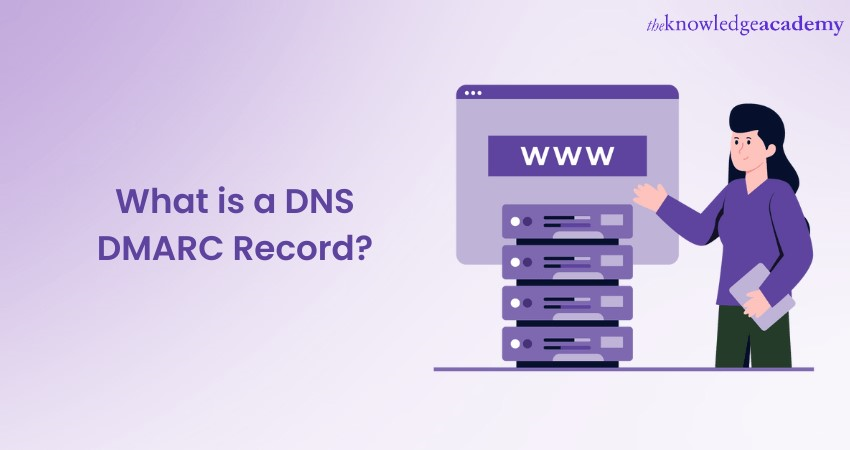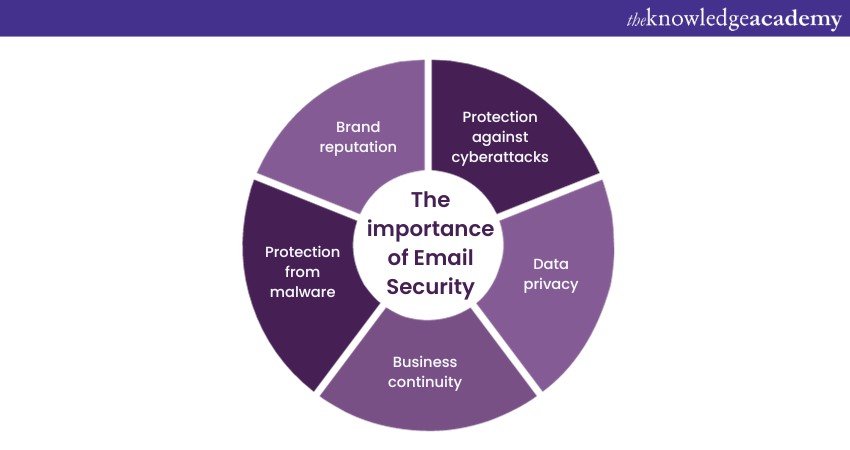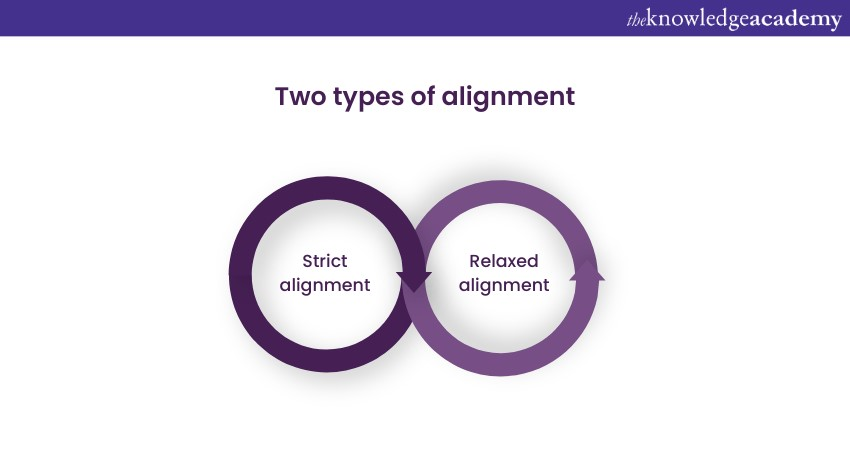We may not have the course you’re looking for. If you enquire or give us a call on 01344203999 and speak to our training experts, we may still be able to help with your training requirements.
We ensure quality, budget-alignment, and timely delivery by our expert instructors.

As we navigate the intricacies of the digital domain, understanding the DNS DMARC Record becomes essential. This blog will unravel its significance, explore its components, and unveil its role in fortifying our email defences.
Join us on a journey to safeguarding your online presence and ensuring the authenticity of your emails takes centre stage. In this blog, you will learn what is a DNS DMARC Record and the intricacies surrounding it. Read more to learn!
Table of Contents
1) The importance of Email Security
2) Role of DNS DMARC Records
3) Understanding DNS DMARC Records
4) Components of a DNS DMARC Record
5) Conclusion
The importance of Email Security
In today's interconnected world, email has become integral to our personal and professional lives. It is a convenient and efficient means of communication, allowing us to instantly exchange information, documents, and messages across the globe. However, the convenience of email also comes with significant security risks. This is why Email Security is of paramount importance. This section of the blog will examine the different parts of Email Security and why it counts now more than ever:

a) Protection against cyberattacks: Email is a prime target for cybercriminals. Phishing attacks are rampant in which malicious actors impersonate trusted entities to deceive recipients into revealing sensitive information. A well-crafted phishing email can trick even the most vigilant individuals. Email Security measures, such as robust spam filters and authentication protocols like Domain-based Message Authentication, Reporting, and Conformance (DMARC), are essential in thwarting these attacks.
b) Data privacy: Emails often contain sensitive information, from personal conversations to confidential business data. Ensuring the confidentiality of this data is critical. Email encryption, such as Transport Layer Security (TLS) for email transmission and end-to-end encryption for message content, helps safeguard your information from interception and eavesdropping.
c) Business continuity: Many organisations rely heavily on email for day-to-day operations. Email downtime due to security breaches or technical issues can disrupt business processes, resulting in financial losses and damage to reputation. Implementing robust Email Security measures, including backup and recovery solutions, helps ensure business continuity despite email-related incidents.
d) Protection from malware: Malware, such as viruses, worms, and ransomware, can be spread through email attachments or links. Opening a malicious email attachment can lead to data loss, system compromise, and financial harm. Robust Email Security solutions scan attachments and links for potential threats, minimising the risk of malware infections.
e) Brand reputation: Your email domain is essential to your online identity. If your part is used for spam or phishing, it can tarnish your brand's reputation. Implementing email authentication mechanisms like SPF, DKIM, and DMARC helps ensure that only legitimate emails are sent from your domain, preserving your brand's trustworthiness.
Dissect the way IT Support and Solution Training.
Role of DNS DMARC Records
Email spoofing, phishing, and impersonation are tactics that malicious actors employ to deceive recipients and gain unauthorised access to sensitive information or perpetrate fraud. To combat these threats effectively, organisations and individuals turn to technologies like DNS DMARC (Domain-based Message Authentication, Reporting, and Conformance) records.
Before we explore their role, let us briefly recap what DNS DMARC records are:
a) DNS (Domain Name System): DNS is akin to the internet's address book. It translates human-readable domain names (e.g., example.com) into IP addresses (e.g., 192.168.1.1) that computers use to locate one another on the internet.
c) DMARC: DMARC is an email authentication protocol for Domain-based Message Authentication, Reporting, and Conformance. It builds upon existing authentication mechanisms like SPF and DKIM to provide a comprehensive email validation and protection framework.
Email spoofing is a deceptive practice in which a sender forges the sender's address to appear as if it is coming from a trusted source. DNS DMARC records help prevent email spoofing by allowing email recipients' servers to verify the authenticity of the sender's domain. If the email fails the DMARC check, it can be treated as suspicious or even rejected. If you're preparing for a career in network security or IT, exploring DNS Interview Questions can provide valuable insights into how DNS protocols, like DMARC, help safeguard against such threats.
DNS DMARC records protect against phishing and spoofing and improve email deliverability. When email servers see a DMARC record, they can verify that the email is from the claimed sender. This reduces the likelihood of legitimate emails being flagged as spam or rejected.
Cybercriminals often impersonate well-known brands to deceive recipients into opening malicious emails. DNS DMARC records are crucial in preserving your brand's reputation by ensuring only authorised emails are sent from your domain. This builds trust with your customers and partners.
DNS DMARC records contain several key components, including the DMARC policy, DKIM, and SPF. Each element contributes to the overall email authentication process, enhancing the security of your email communications.
Ready to become a master of BIND DNS Administration? Gain the skills and knowledge you need to excel in DNS administration and take your IT career to new heights.
Understanding DNS DMARC Records
One of the primary functions of DNS DMARC records is to combat email spoofing and impersonation. Email spoofing occurs when malicious actors forge the sender's address to make it seem that it originates from a trusted source. These deceptive emails are often used for phishing attacks or spreading malware.
DNS DMARC Records address this threat by allowing email recipients' servers to check the authenticity of the sender's domain. They verify that the sender is authorised to send emails on behalf of the claimed territory. If an email fails the DMARC check, it can be flagged as suspicious, quarantined, or outright rejected, depending on the DMARC policy set by the domain owner.
In addition to preventing spoofed emails from reaching recipients' inboxes, DNS DMARC records improve email deliverability. Many email providers and spam filters use DMARC authentication to determine whether an email should be considered legitimate. Emails from domains with correctly configured DMARC records are more likely to be delivered to the inbox rather than marked as spam or rejected.
To understand how a DNS DMARC Record functions, it is essential to know its key components:
a) DMARC policy: It is specified within the DNS DMARC record, determines the action to be taken when an email fails authentication. It can be set to:
b) None: This policy is often used initially to monitor email activity without taking any action. It helps domain owners assess the impact of DMARC enforcement.
c) Quarantine: Emails that fail DMARC authentication are placed in a designated folder, typically the recipient's spam or quarantine folder.
d) DKIM (DomainKeys Identified Mail): It is an email authentication process that counts a digital signature to an email's header. This signature is generated using cryptographic keys to verify the email's authenticity. The DKIM signature is compared with the public key published in the domain's DNS records to ensure the email has not been altered in transit.
e) SPF (Sender Policy Framework): SPF is another email authentication mechanism that identifies which mail servers are qualified to send email on behalf of a particular domain. It prevents unauthorised servers from sending emails that claim to originate from the field.
When a recipient's mail server receives an email, the server queries the sender's domain's DNS for a DMARC record. If a DMARC form is present, the recipient's server uses it to select the correct action based on the DMARC policy. If the email passes authentication (according to the DKIM and SPF checks), it is delivered to the recipient's inbox. If it fails authentication and the DMARC policy is set to "quarantine" or "reject," the email is treated accordingly.
Ready to kickstart your IT career with a solid foundation? Enroll in our IT Fundamentals Training course.
Components of a DNS DMARC Record
A DNS DMARC (Domain-based Message Authentication, Reporting, and Conformance) record is a vital element in the world of Email Security, enabling domain owners to specify authentication policies for their email communication. Understanding the components of a DNS DMARC record is essential for effectively implementing this critical security measure.
DMARC policy
At the heart of a DNS DMARC record is the DMARC policy. This policy defines what action an email receiver (a mail server receiving an email from your domain) should take when an email fails DMARC authentication. There are three primary DMARC policy options:
a) None: This policy is often used initially to monitor email traffic without enforcing strict actions. It instructs receivers to report on DMARC failures but allows the emails to be delivered. This is valuable when you are in the process of setting up DMARC and want to assess its impact.
b) Quarantine: With this policy, receivers are instructed to treat emails that fail DMARC authentication as suspicious. These emails are typically placed in a designated folder, such as the recipient's spam folder. Quarantine is a middle-ground approach, protecting while avoiding outright rejection.
c) Reject: The most stringent policy, "reject," instructs receivers to reject emails that fail DMARC authentication entirely. These emails do not reach the recipient's inbox and are discarded. This policy is crucial for preventing email spoofing and phishing attacks.
DKIM (DomainKeys Identified Mail)
DKIM is a critical email authentication mechanism that works with DNS DMARC records. It adds a layer of security by digitally signing email messages. Here is how it works:
a) When an email is sent from a domain that uses DKIM, it is signed with a unique private key held by the sender.
b) The sender's domain publishes the corresponding public key in its DNS records.
c) When the recipient's email server receives the email, it retrieves the sender's public DKIM key from the DNS and uses it to verify the email's digital signature.
d) If the signature matches the email's content, the email is considered authentic. If not, it fails the DKIM check, affecting the overall DMARC authentication result.
SPF (Sender Policy Framework)
SPF is another crucial component of DNS DMARC records. It helps protect against email spoofing by specifying which mail servers are authorised to send emails on behalf of a particular domain. Here is how SPF works:
a) The domain owner publishes an SPF record in their DNS settings. This record lists authorised email servers' IP addresses and hostnames that can send emails using the domain's name.
b) When an email is received, the recipient's server includes the SPF record of the sending domain.
c) If the sending server's IP address matches the one listed in the SPF record, the email passes the SPF check. Otherwise, it fails.
d) The SPF check is an essential part of the DMARC authentication process, as it helps confirm that the email originates from an authorised server for the sender's domain.
Alignment
Alignment refers to the connection between the environment in the DKIM signature and the field in an email's "From" header. There are two types of alignment:
a) Strict alignment: In strict alignment, the DKIM and the "From" domains must match strictly for the DMARC check to pass. Any deviation results in a failed authentication.
b) Relaxed alignment: Relaxed alignment allows for some flexibility. It considers the DKIM domain to align with the "From" domain if they share the same organisational environment. This flexibility is functional when legitimate email flows involve different subdomains.
Conclusion
In the cybersecurity domain, the DNS DMARC Record stands as a sentinel against email-based threats. Its role in preventing email spoofing, enhancing deliverability, and preserving brand reputation cannot be overstated. By embracing their power, individuals and organisations can bolster their Email Security, ensuring that only legitimate emails find their way to inboxes while malicious ones are cast aside. In the realm of Email Security, the DNS DMARC Record reigns supreme, defending our digital domain one email at a time.
Frequently Asked Questions
What are the Other Resources and Offers Provided by The Knowledge Academy?

The Knowledge Academy takes global learning to new heights, offering over 3,000 online courses across 490+ locations in 190+ countries. This expansive reach ensures accessibility and convenience for learners worldwide.
Alongside our diverse Online Course Catalogue, encompassing 19 major categories, we go the extra mile by providing a plethora of free educational Online Resources like News updates, Blogs, videos, webinars, and interview questions. Tailoring learning experiences further, professionals can maximise value with customisable Course Bundles of TKA.
Upcoming IT Infrastructure & Networking Resources Batches & Dates
Date
 Security Management, Planning, and Asset Protection Training
Security Management, Planning, and Asset Protection Training
Fri 16th May 2025
Fri 18th Jul 2025
Fri 19th Sep 2025
Fri 21st Nov 2025






 Top Rated Course
Top Rated Course





 If you wish to make any changes to your course, please
If you wish to make any changes to your course, please


